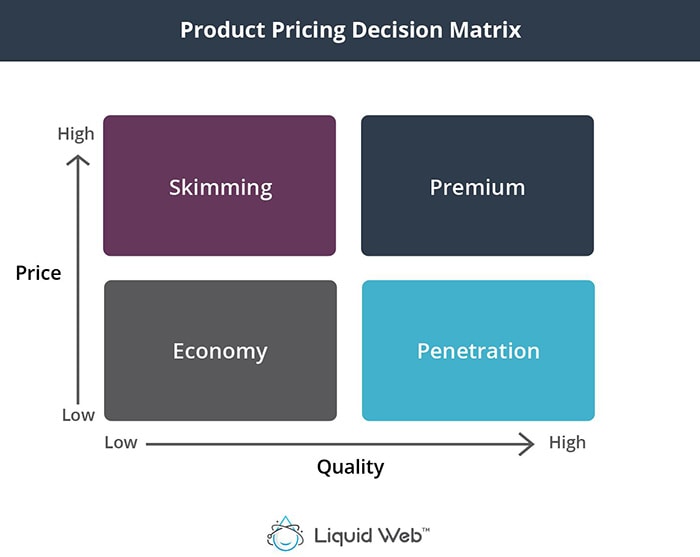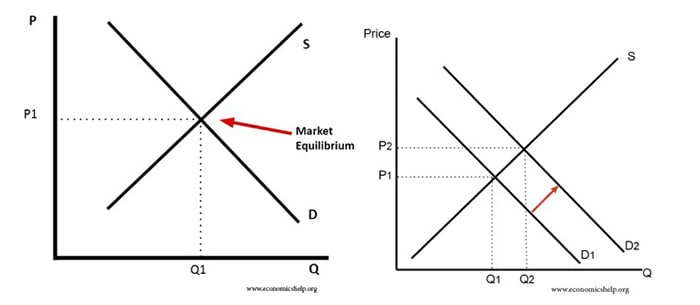How to Determine the Optimal Price for Your Product in a Subscription Business
Whether you are selling online streaming services, newspapers, magazines, exercise apps, or web hosting, getting your product pricing strategy in place on day one will help retain a positive revenue stream. To quote Richie Norton, author of the book The Power of Starting Something Stupid:
At the end of the day, if you have a great product and service paired with the wrong pricing strategy/business model, you do not have a business”.
If you price your products incorrectly, you will create problems that you will never overcome. This article aims to equip you with an understanding of how to price your products effectively from the beginning vs. day 50 without getting a Master’s Degree in the Economics of Pricing.
With that in mind, if you are a start-up, transitioning to a subscription business model or recurring revenue model, or adding a new line to your current offerings, there are two main topics you must master for effective product pricing:
- Determination of Product Price
- Evolution of Product Pricing
Determination of Product Pricing
Before you can set a price, plan out how you will sell your product first.
Start by asking yourself if your product will be sold:
- Per unit
- Per user
- Based upon total usage
- A flat fee
- Another structure entirely
Online streaming services such, as Disney+ or Netflix, charge per user. Exercise apps such as Peloton can charge per session or for unlimited access.
At Liquid Web, we charge our customers in two main ways:
- Flat Fee – For Dedicated Server pricing and Cloud Server pricing
- Usage – For backups of your information, just like a company like Carbonite would. The more you use in space, the higher the rate charged
We can expand on the product pricing types above to determine which method works best for your customers. Remember, one size does not fit all in the recurring revenue industry. You need to adapt your product pricing accordingly:
- Per User – Named users are identified and charged for each login, or you can have concurrent users who can share one login at one price
- Total Usage – Number of transactions transacted, number of reports viewed, articles read, or even storage space used
- Flat Fee – You can give access to the software or content you are providing on an unlimited basis for a month, quarter, or year
- Other – Customers’ business size that is purchasing, performance-based, tiering models for users, and usage used
After making this determination for your product pricing, we can then focus on evaluating whether the price being charged makes sense.
The price charged needs to be fair, flexible, easy to implement, able to be changed, and have the customer feel the pricing offers value to them. Other product pricing strategies will include maximizing profits, value to be offered, quality, survival, competition, demand, breakeven, cost of goods sold, and margin pricing.
Product Pricing Decision Matrix
You can plot these metrics above on a simple graph to scale the importance of each and the impact on price. As the pricing moves up and to the right, it is more beneficial to the company, and as it moves down and to the left, more beneficial to the customer.

Skimming
Skimming is the ability to generate as much revenue as you can as the higher price entrant to the market. You can charge a higher price before the product or service gets saturated. Once this happens, the price will then need to move down. This means setting a high price on day one, which is used mostly in new product launches. An example of this would be hardcover book sales before soft cover becomes available.
Premium
Premium pricing is charging a high price for a high service or product. Is your service unique, or does your product have prestige like Rolex or a Rolls Royce? If so, pricing your product higher can actually boost sales with more perceived value.
Economy
Economy pricing is offering your product at a low price to gain a higher market share. You can do this when you have low overhead costs and can sell at a discounted rate. An example of this is Dollar General or Family Dollar.
Penetration
Penetration pricing sets a low offer price to gain a competitive advantage to then increase the price at a later date. Introductory or special offers work when you have a high-quality product.
Evolution Of Product Pricing
The price you charge today will not be the same price you charge in the future. The demand for your product will change, and with that, the product pricing.
This all started years ago with the Cost-Plus model whereby you would charge customers your total cost plus a percentage for profit. It was a quick and automatic way to determine price and its changes.
The world changed when the Internet lowered the barrier to entry and created a way to gain market share with the ease of receiving products and services with Amazon. Because of this, shoppers are now less loyal, more price-sensitive, and always on the lookout for a deal. They are also called bargain shoppers.
There are some key issues that you need to keep an eye on every day while thinking about product pricing:
1. New Entrants
The entry of new competitors in a market tends to reduce the market price. When more companies compete for the same market share, customers are given a choice to pay what they want for that same product or service. The higher the barriers to entry, the higher the price, and the lower the barriers to entry, the lower the price. This is one of Porter’s Five Forces of Competition.
2. Customer Feedback
Reduce churn in your recurring revenue by offering a quality product or service at an agreeable price. Knowing why people are buying or leaving will help understand where the price needs to move. Testing, focus groups, and surveys are a few ways to determine what the customer is willing to invest. Customers have more to say than ever before through these surveys and on social media sites like Instagram, Twitter, or Facebook.
3. Competition
When there are two or more products that are substantially the same, the customer’s purchase is usually the cheaper option. When setting your price, you have three options.
- Below the competition
- Same as competitors
- Higher than the competition
Using the Business Intelligence that is gained above and the analytics you have captured, you can use science to your advantage. Examine the demand and supply curves showing the price elasticity of demand below to see how supply and demand should affect your product pricing. You will need to monitor your price, the demand for it, and the supply in the market to ensure that your business achieves the healthy margins it needs to be profitable.

In the End, Cover Your Costs
There is one fundamental rule in pricing and business: you need to cover your costs. If your costs are X, you need to make sure that your total sales Y are higher than X. Make sure you include your labor, product costs, licenses, marketing, people, benefits, interest, rent, power, and even water in your overall costs to ensure you have a profitable product pricing strategy in place.
Struggling to Scale Your Business? Find out Why Outsourcing Managed Web Services is Better for Your Business

David Gibb
David Gibb is the Financial Controller at Liquid Web. He has over 20 years of experience working in Finance. He is a CPA in Canada, CGMA in the United Kingdom, and a CPA in Australia.
Keep up to date with the latest Hosting news.




